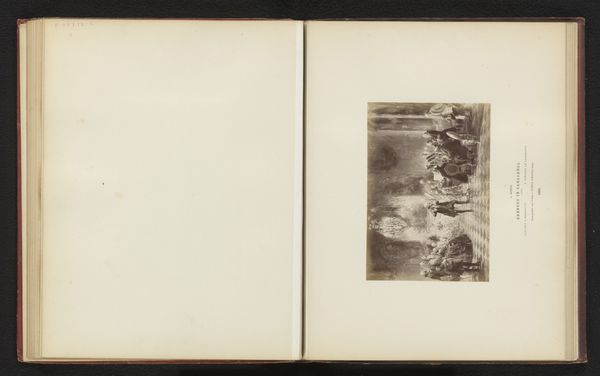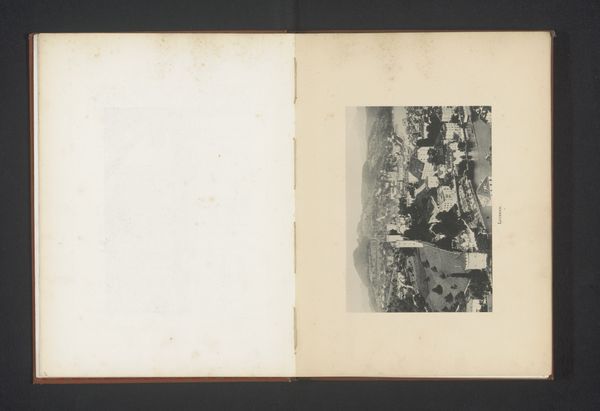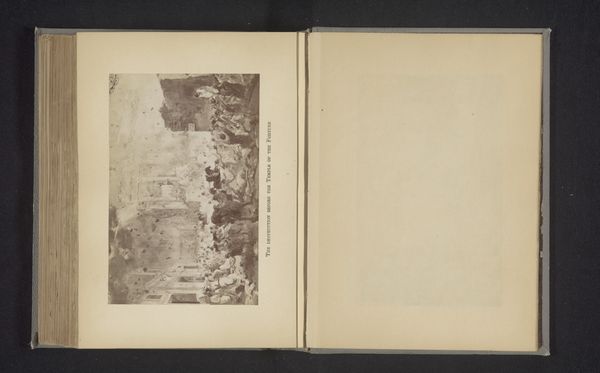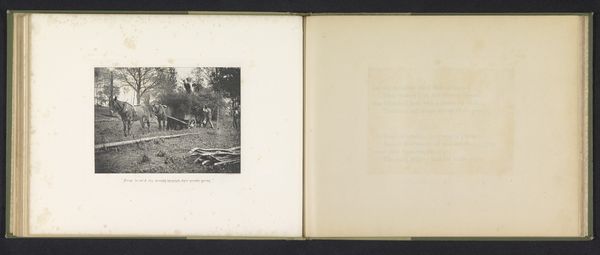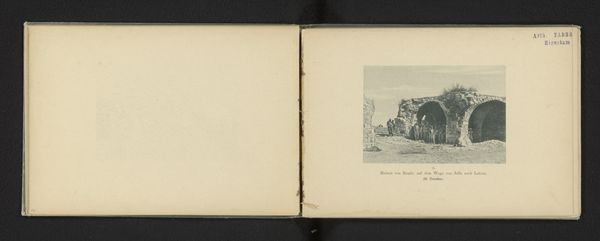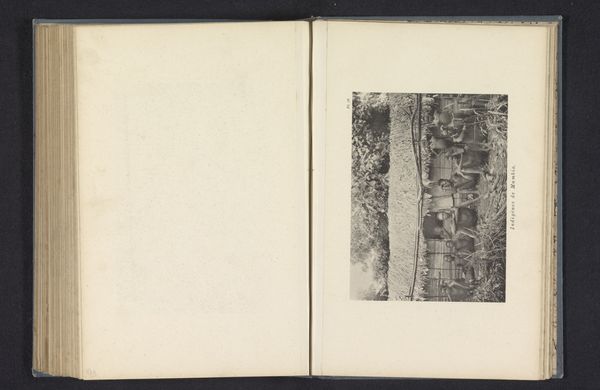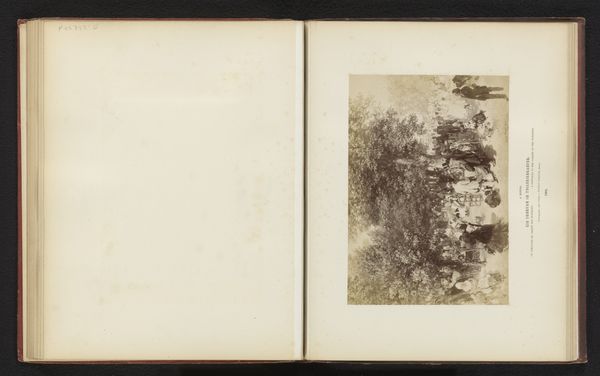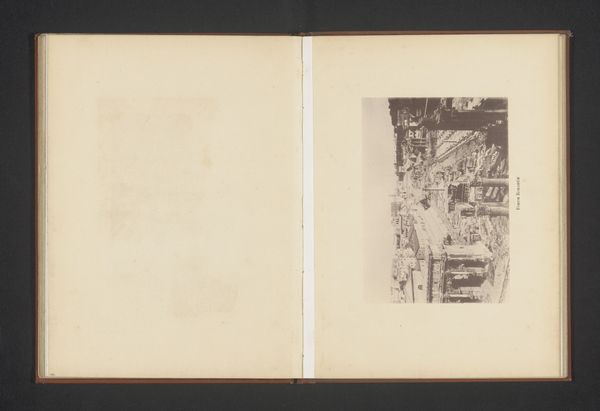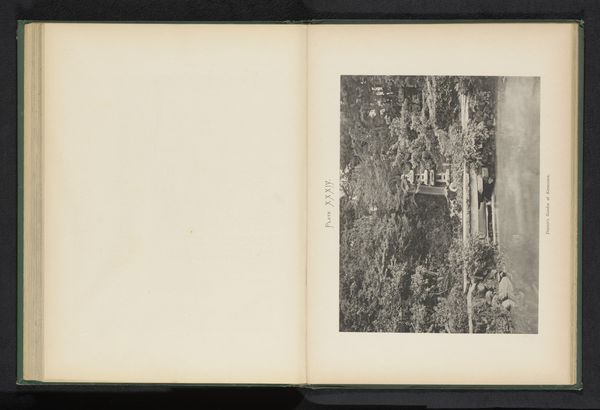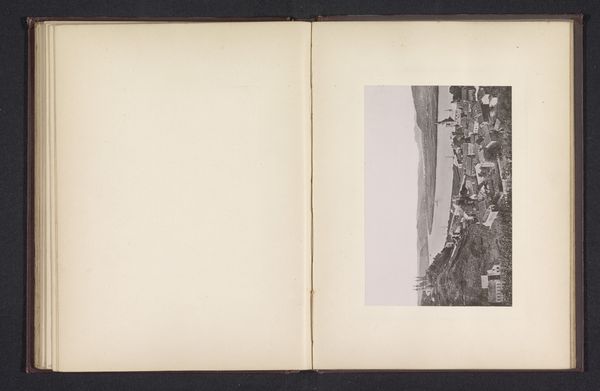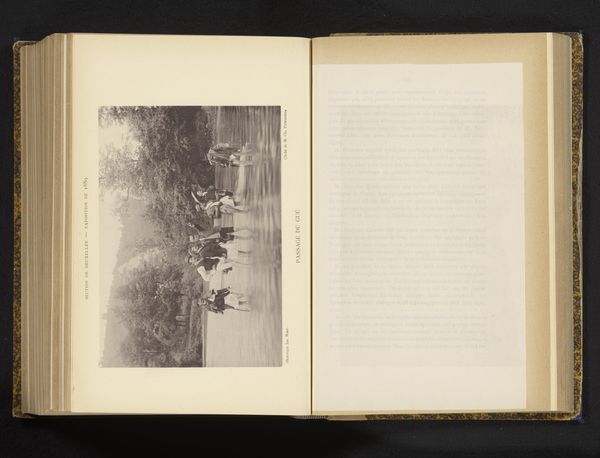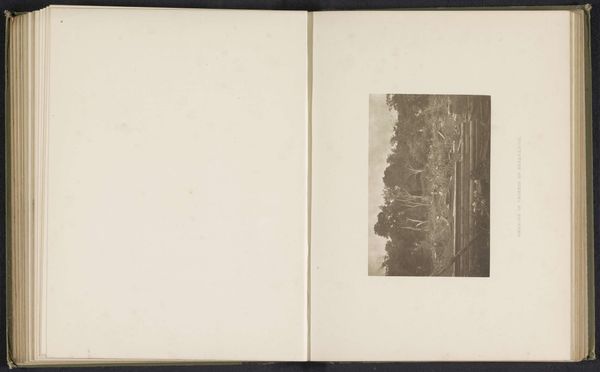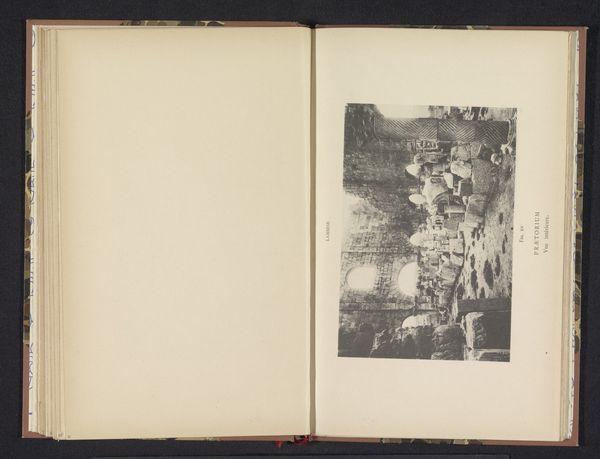
Dimensions: height 152 mm, width 190 mm
Copyright: Rijks Museum: Open Domain
Curator: Let's turn our attention to this striking ink drawing on paper by J.L. Williams, entitled "Bomen langs een meer nabij Sleepy Hollow," dating from before 1887. Editor: It immediately evokes a sense of shadowed tranquility, doesn't it? The dense foliage almost swallows the path leading to the lake, a quiet stillness permeating the scene. Curator: The material choice here is very telling. Ink, with its fluidity and capacity for fine detail, allows Williams to create a highly textured surface. The Romantic style links this work to larger conversations about nature, emotion, and the sublime in the 19th century, ideas heavily influenced by industrial expansion and humankind’s changing relation to the environment. Editor: Absolutely. Looking closely, you see the deliberate arrangement of light and dark that produces such dramatic effect, which of course draws influence from Romanticism as well. Observe how Williams uses light to guide the eye through this work of nature to a bright gap that could reveal a calm lake reflecting the trees. The careful placement and weighting of shadows makes all the difference here, in creating the intended emotional response. Curator: Indeed, that control of light is indicative of artistic labor and the crafting of emotional space for consumption, shaping what we think and feel about nature as we experience it from afar. Sleepy Hollow, made famous by Washington Irving, itself was in his writing and its reader’s imaginations an ideal setting away from cities and labor. It adds meaning to think of Sleepy Hollow not simply as a geographical point but as the staging ground where Romantic values meet burgeoning capitalism. Editor: And consider how effectively the limited tonal range accentuates this feeling of quiet withdrawal. The lack of color amplifies the textural contrasts, emphasizing the difference between dense foliage and smooth, reflective water, wouldn’t you say? Curator: The choice of ink over other media also signals an economy of resources and labor within the Romantic tradition, creating nature, which itself provided so much resource through exploitation, without needing an investment in rich colors, further contributing to the romantic feeling evoked when reflecting on what is absent. Editor: It certainly leaves you contemplative about what that place would mean for you, given how he presents the scene, doesn’t it? The scale allows the artist control and intentionality. Curator: Exactly, the artist makes it so. We cannot extract its meaning apart from that original moment. Editor: That's what continues to resonate, the artist’s eye shaping our experience.
Comments
No comments
Be the first to comment and join the conversation on the ultimate creative platform.
